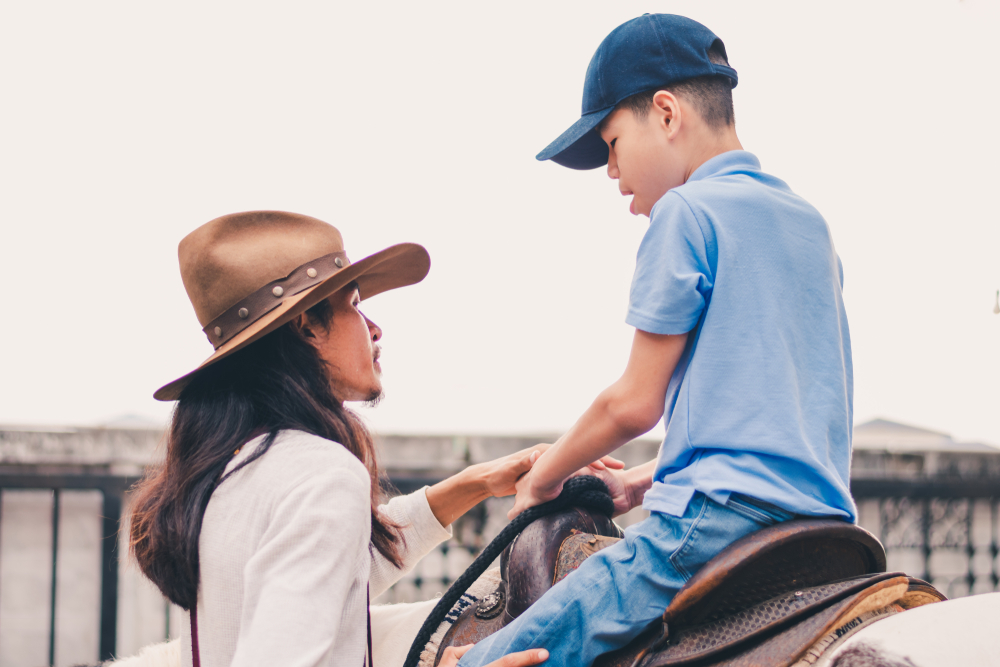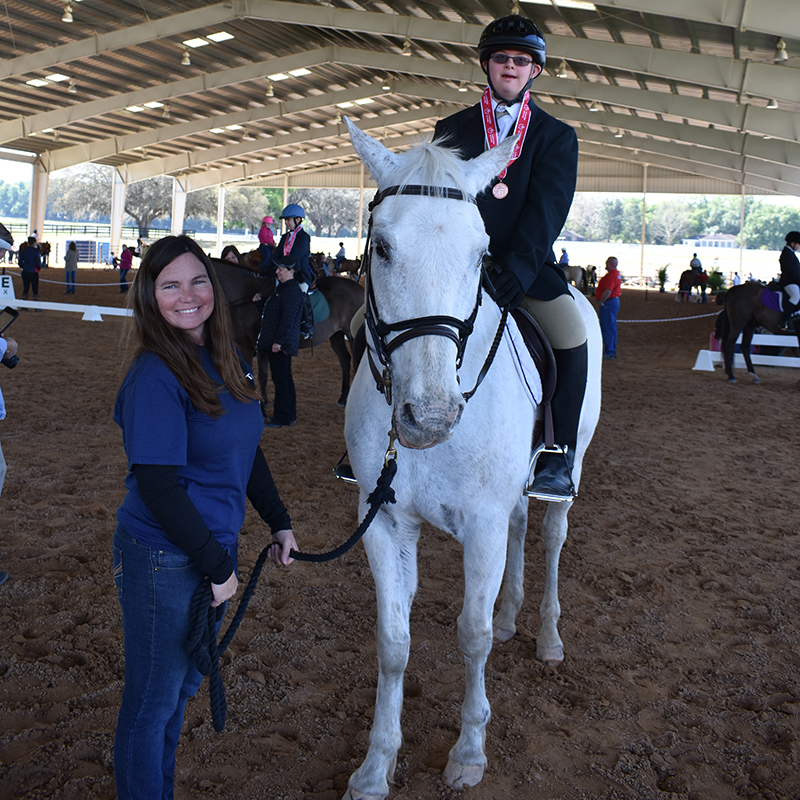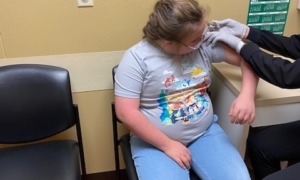
AnnGaysorn/Shutterstock
.
Eighteen-year-old Christopher Frierson is sitting tall and riding high. In one weekend in spring 2019, he competed in an English-saddle horse show, attended prom and competed in a Western-saddle horse show. Christopher’s mother, Pam, beams with pride when she recalls the daring dismounting stunts he performed when he was a child.
“He always did his famous backflip off of the horse until he got too big. He would sit in the saddle and move his legs to one side of the horse and then go backwards over the saddle and land on his feet. He hated when he outgrew that one!”
Christopher is not a typical teen. He was born with Down syndrome. But, after years of therapy astride a horse, his accomplishments have amazed his family and friends.
“He’s been in competitions against typically developed people where he is the only special needs competitor in the entire event. He has won maybe three or four dozen medals and ribbons at all levels,” said Christopher’s father, Chuck.
Christopher’s parents credit his 16 years of hippotherapy with his occupational therapist Rebecca Davenport for his achievements. Hippotherapy literally means “treatment with help of the horse.” Davenport says hippotherapy can provide a host of beneficial sensory stimuli: Muscles and joints receive deep pressure stimulation from bouncing and holding positions, and the brain receives stimulation to sense movement and balance as the horse moves and changes speeds. Since a horse walks with a gait that’s similar to the human gait, variable, rhythmic and repetitive, a child who has never walked or who has an abnormal gait can sit on a horse and experience what “normal” feels like.
“If you have somebody who hasn’t walked or is not walking, that shift from side to side transfers to the rider and it helps with their balance and strength. And kids that were not walking before, often start walking,” Davenport explained.
Physical, emotional benefits
Davenport and her mother Marianne co-founded the hippotherapy program Hope Therapy in Middleburg, Fla. in 2001. Their patients include children and adults with autism/Asperger’s syndrome, traumatic brain injuries, cerebral palsy, Down syndrome, developmental delays and stroke victims.
Davenport says hippotherapy is so successful because “the horse is nonjudgmental. The kids that come here often have self-esteem issues, often due to their physical impairments or emotional things that have gone on in their lives. And so when they’re around the horses, they feel relaxed, calm. It’s a safe place.”

Pam Frierson
Christopher Frierson and his occupational therapist Rebecca Davenport at the Florida Special Olympics in March 2019.
Hippotherapy may feel like fun for the patient, but researchers have found it can have serious benefits. A study in Physical & Occupational Therapy in Pediatrics found children with cerebral palsy had increased body control after only 10 sessions. It also found marked improvement in patients’ gross and fine motor skills.
The nonprofit American Hippotherapy Association, which lists such therapists around the nation, provides resources to therapists and other health professionals, families and third-party payers. The therapy requires a doctor’s prescription and is often covered by insurance.
Beyond the physical connection to the horse, Davenport says the emotional relationship between the horse and rider has a tremendous impact:
“An animal-human bond is hard to describe, but you can see it. You can see the smiles on their faces and you can see the progress. One of my first riders was 3 and he was not speaking, just jumbling words and babbling. You couldn’t understand a thing he was saying. After a week, he said his name for the first time, and three weeks later he said, ‘No go school, ride horse.’ Of course, you want a child to be excited about school, but if a child can be so connected with that horse to put a sentence together after three weeks, that’s a huge success.”
Christopher Frierson loves the program so much he decided to give back to it. He created and developed a sensory trail for Hope Therapy riders as an Eagle Scout project, doing the planning, fundraising and helping to coordinate volunteers.
His mother said Christopher’s determination and enthusiasm about horses is infectious. “Whenever he finishes a competition, he has a big fist pump up in the air, and a big ‘Yahoo,’ and says, ‘I did it, I did it, I did it.’”



























